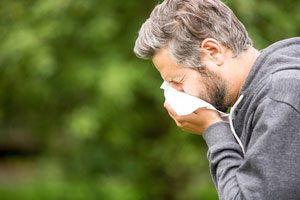Illnesses that Thrive in Autumn
 Autumn brings great beauty, along with falling temperatures and dropping humidity levels. Of course, this time of year also begins the peak of infections, particularly the flu, and other viral illnesses. Because many of these illnesses are easily transmitted, and cooler temperatures can suppress your immune system, it is important to understand what illnesses thrive in autumn as well as the precautions you should take to protect yourself and your loved ones. The most susceptible are senior adults, little ones, and those with compromised immune systems, though no one is completely immune to infections.
Autumn brings great beauty, along with falling temperatures and dropping humidity levels. Of course, this time of year also begins the peak of infections, particularly the flu, and other viral illnesses. Because many of these illnesses are easily transmitted, and cooler temperatures can suppress your immune system, it is important to understand what illnesses thrive in autumn as well as the precautions you should take to protect yourself and your loved ones. The most susceptible are senior adults, little ones, and those with compromised immune systems, though no one is completely immune to infections.
Simple Steps
As fall comes in with its changes, it is important to be prepared. Checking the weather forecasts, dressing appropriately, and eating healthy all play into keeping well during the fall. Handwashing and available immunizations are also key in preventing illnesses that thrive in autumn.
Colds and Flu Flourish in Fall
It seems though colds and flu go hand in hand with fall. Because you are more vulnerable to due to the weakening of your immune system as well as the cooler temperatures and humidity changes that occur, you become more susceptible to colds and flu. Colds typically run their course in seven to 10 days, the flu with its aches, pains, fever, sore throat, and cough can linger even longer, sometimes resulting in death.
In fall, both children and adults inside spend more time, allowing for germs to be spread quickly and easily. The drier air that comes with fall causes nasal passages to dry out as well, letting viruses and bacteria enter the body more easily. Sudden changes in temperature also enhance the spread of germs. Washing hands and limiting your exposure to those with colds and flu are the best preventatives.
Seasonal Allergies Increase in Autumn
Outdoor allergies seem to increase in fall, making their extended stay until winter arrives. Sometimes it is difficult to tell the difference between allergies and colds and flu because symptoms can be similar. Colds and allergies both may feature sore throat, coughing, nasal congestion, or a runny nose, but allergies typically include itchy, watery eyes, itchy ears and throat, or wheezing, all of which can last for weeks or even months. With a cold, additional symptom include fever, chills, and body aches. When it comes to determine the difference between allergies, colds, or the flu, doctors can test to determine the presence of the flu. When your allergies experience a flare-up, you doctor can recommend medication to lessen your symptoms, and staying indoors during the early part of the day can help.
Sinusitis is Common in Autumn
Sinusitis, an inflammation of the sinuses, is more common in the autumn, worsening sinus headaches as result of cooler temperatures.
Asthma’s Unexpected Fall Triggers
Asthma is a chronic lung disease, one in which asthma suffers experience asthma attacks from unexpected fall triggers like cooler air, allergies, campfires, and falling leaves.
Seasonal Affective Disorder (SAD)
Seasonal Affective Disorder (SAD), sometimes called winter depression or the “winter blues” often begins in fall and follows into winter. Those who suffer from SAD often experience low energy levels and mood swings. Your physician can help lessen the effects with phototherapy, psychotherapy, or medications.
Arthritis Thrives in Cooler Temperatures of Fall
Arthritis, chronic inflammation of the joints, often flares up in fall as temperatures drop. Even only a 10 degree drop in temperature can mean increased pain for arthritis sufferers. Daily stretching will help relieve the pain, as will keeping your weight at a healthy level and stopping smoking.
